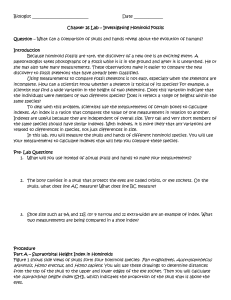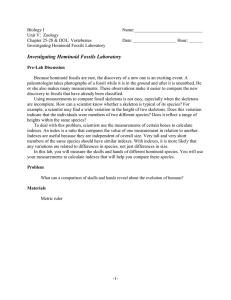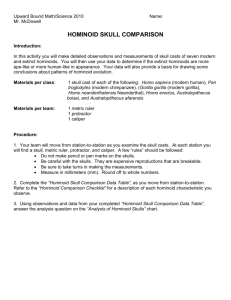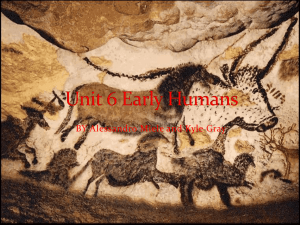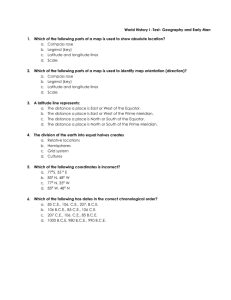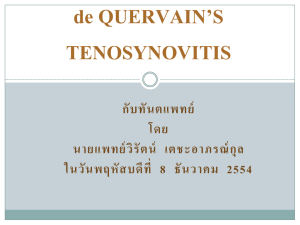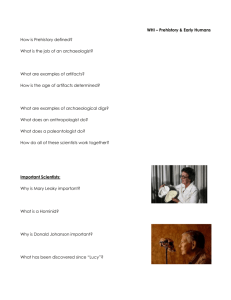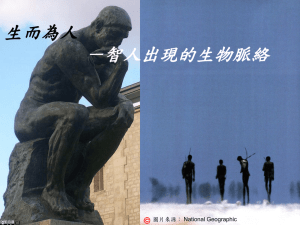Ch 26. Investigating Hominoid Fossils
advertisement
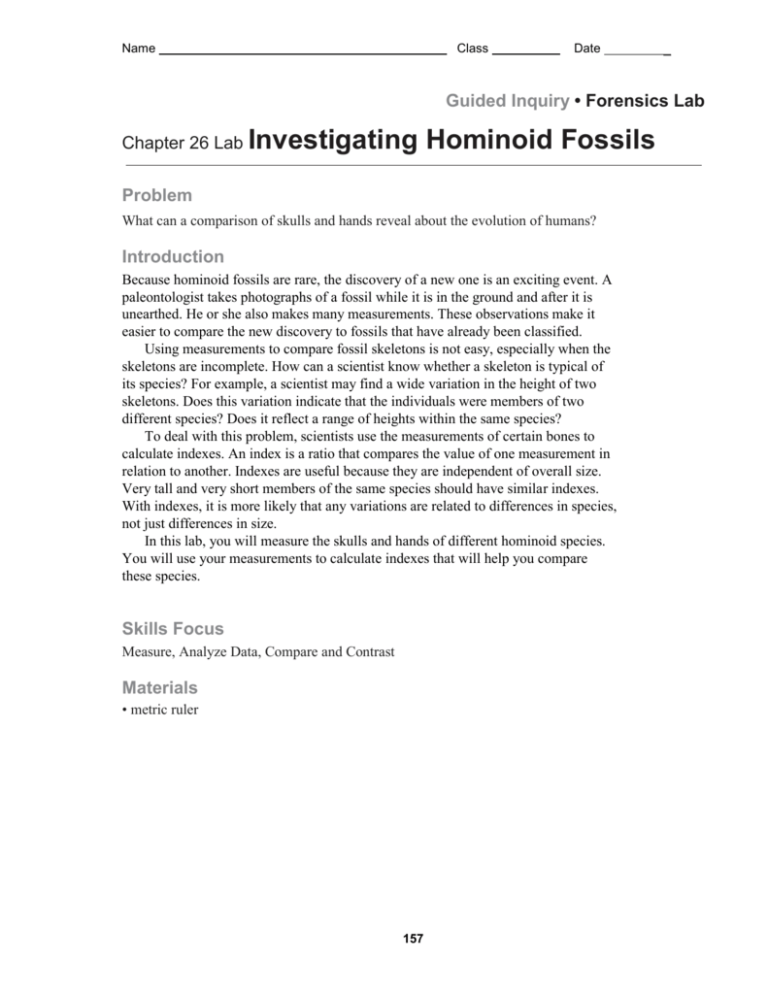
Name Class Date _ Guided Inquiry • Forensics Lab Chapter 26 Lab Investigating Hominoid Fossils Problem What can a comparison of skulls and hands reveal about the evolution of humans? Introduction Because hominoid fossils are rare, the discovery of a new one is an exciting event. A paleontologist takes photographs of a fossil while it is in the ground and after it is unearthed. He or she also makes many measurements. These observations make it easier to compare the new discovery to fossils that have already been classified. Using measurements to compare fossil skeletons is not easy, especially when the skeletons are incomplete. How can a scientist know whether a skeleton is typical of its species? For example, a scientist may find a wide variation in the height of two skeletons. Does this variation indicate that the individuals were members of two different species? Does it reflect a range of heights within the same species? To deal with this problem, scientists use the measurements of certain bones to calculate indexes. An index is a ratio that compares the value of one measurement in relation to another. Indexes are useful because they are independent of overall size. Very tall and very short members of the same species should have similar indexes. With indexes, it is more likely that any variations are related to differences in species, not just differences in size. In this lab, you will measure the skulls and hands of different hominoid species. You will use your measurements to calculate indexes that will help you compare these species. Skills Focus Measure, Analyze Data, Compare and Contrast Materials • metric ruler 157 Name Class Date _ Pre-Lab Questions 1. Use Models What will you use instead of actual skulls and hands to make your measurements? 2. Interpret Visuals The bony cavities in a skull that protect the eyes are called orbits, or eye sockets. On the skulls, what does line AC measure? What does line BC measure? 3. Use Analogies Shoe sizes such as 9A and 11E (or 9 narrow and 11 extrawide) are an example of an index. What two measurements are being compared in a shoe index? Procedure Part A: Supraorbital Height Index in Hominoids Figure 1 shows side views of skulls from four hominoid species: Pan troglodytes, Australopithecus afarensis, Homo erectus, and Homo sapiens. You will use these drawings to determine distances from the top of the skull to the upper and lower edges of the eye socket. Then you will calculate the supraorbital height index (SHI), which indicates the proportion of the skull that is above the eyes. The prefix supra- means “above.” 1. Measure the distances AC and BC in centimeters for each skull. Record the measurements in Data Table 1. 2. For each species, divide the value of BC by the value of AC and multiply the result by 100. The result is the supraorbital height index (SHI). Round the answers to the nearest whole number, and record them in Data Table 1. Data Table 1: Skull Measurements Species BC (cm) Pan troglodytes Australopithecus afarensis Homo erectus Homo sapiens 158 AC (cm) SHI Name Class Figure 1 Hominoid skulls Pan troglodytes Australopithecus afarensis 159 Date Name Class Homo erectus Homo sapiens 160 Date Name Class Date Part B: Thumb Index in Hominoids Figure 2 depicts the thumb and index finger of Pan troglodytes, Australopithecus afarensis, and Homo sapiens. You will use these drawings to calculate a thumb index for each species. The thumb index compares the length of the thumb to the length of the hand. 3. For each species, measure the length of the thumb and the length of the index finger in centimeters. Make these measurements from the tip of the digit to the point where the finger and thumb meet at the wrist joint. Record your results in Data Table 2. 4. To calculate the thumb index, divide thumb length by index finger length and multiply the result by 100. Round the answer to the nearest whole number and record the result in the table. Data Table 2: Hand Measurements Thumb Length (cm) Index Finger Length (cm) Pan troglodytes Australopithecus afarensis Homo sapiens Figure 2 Hand bones of three hominoids 161 Thumb Index Name Class Date Analyze and Conclude 1. Analyze Data Of the species you investigated, which had the smallest SHI and which had the largest? What is the relationship between the SHI value and the shape of the skull? 2. Infer How might an increase in a hominoid’s SHI value affect the size of its brain? 3. Analyze Data Does the data support the hypothesis that the thumb index increased as the opposable thumb hand evolved? Explain. 4. Relate Cause and Effect How could an increase in the thumb index affect a hominoid’s ability to use its hands? 5. Design an Experiment Suppose you repeated this lab with drawings that were half the size of the drawings you used. Would your results be the same? Why or why not? Extend Your Inquiry A skeleton retains clues about the life of its owner. How can fossils be used to determine a hominid skeleton’s age, sex, or diet? How can fossils be used to tell how heavy or muscular an individual was? 162
